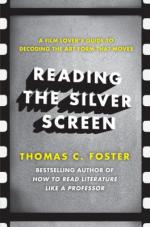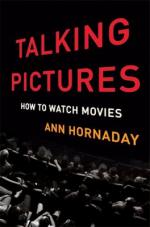- Books
- May We Suggest
- Feature Films
- film critics
- motion pictures
- motion pictures production
- motion pictures philosophy
- motion pictures appreciation
- cinematography
- Arts/Crafts
- Movie
July 1, 2017 | madame librarian
Films can transport us to another time, another place--that's the wonder of film.
"No art form is as instantly and continuously gratifying as film. When the house lights go down and the lion roars, we settle in to be shocked, frightened, elated, moved, and thrilled. We expect magic. While we're being exhilarated and terrified, our minds are also processing data of all sorts--visual, linguistic, auditory, spatial--to collaborate in the construction of meaning. Thomas C. Foster's Reading the Silver Screen will show movie buffs, students of film, and even aspiring screenwriters and directors how to transition from merely being viewers to becoming accomplished readers of this great medium. Beginning with the grammar of film, Foster demonstrates how every art form has a grammar, a set of practices and if-then propositions that amount to rules. He goes on to explain how the language of film enables movies to communicate the purpose behind their stories and the messages they are striving to convey to audiences by following and occasionally breaking these rules. In Reading the Silver Screen, readers will gain the expertise and confidence to glean all they can from the movies they love,"--Amazon.com.
Whether we are trying to impress a date after an art-house film screening or discussing Oscar nominations with friends, we all need ways to watch and talk about movies. But with so much variety between an Alfred Hitchcock thriller and a Nora Ephron romantic comedy, how can everyday viewers determine what makes a good movie? In Talking Pictures, veteran film critic Ann Hornaday walks us through the production of a typical movie-from writing the script and casting to the final sound edit-and explains how to evaluate each piece of the process. How do we know if a film is well-written, above and beyond snappy dialogue? What constitutes a great screen performance? What goes into praiseworthy cinematography, editing, and sound design? And what does a director really do? Full of engaging anecdotes and interviews with actors and filmmakers, Talking Pictures will help us see movies in a whole new light-not just as fans, but as film critics in our own right.
From one of the most admired critics of our time, brilliant insights into the act of watching movies and an enlightening discussion about how to derive more from any film experience. Since first publishing his landmark Biographical Dictionary of Film in 1975 (recently released in its sixth edition), David Thomson has been one of our most provocative authorities on all things cinema. Now he offers his most inventive exploration of the medium yet: guiding us through each element of the viewing experience, considering the significance of everything from what we see and hear on-screen--actors, shots, cuts, dialogue, music--to the specifics of how, where, and with whom we do the viewing. With customary candor and wit, Thomson delivers keen analyses of a range of films from classics such as Psycho and Citizen Kane to contemporary fare such as 12 Years a Slave and All Is Lost, revealing how to more deeply appreciate both the artistry and (yes) manipulation of film, and how watching movies approaches something like watching life itself. Discerning, funny, and utterly unique, How to Watch a Movie is a welcome twist on a classic proverb: Give a movie fan a film, she'll be entertained for an hour or two; teach a movie fan to watch, his experience will be enriched forever.
This course covers the history and aesthetics of the movies, tracing the experiments and innovations that gave rise to the modern cinema, developing a vocabulary that helps explain the variety of choices filmmakers make when they construct shots and edit them together..
A guide for both film makers and serious film fans about how film makers think about film. It identifies 3 ways which, both film makers and audience, watch movies. Through practical examples, it demonstrates how, at any given moment, the way we watch dictates its own rules of time and space and demands its own set of film techniques to address.





